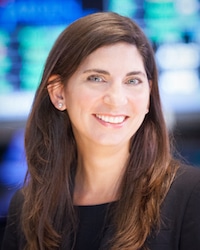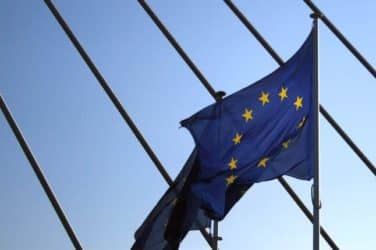Markets Media interviewed Stacey Cunningham, chief operating officer at NYSE Group, on June 13.
Stacey, please tell us about your career trajectory.
I’ve come somewhat full circle in my career. I started on the NYSE Trading Floor as a summer intern when I was in college studying engineering. I spent 10 years on the floor where I worked as a specialist. Then, I spent a few years over at Nasdaq, where I ran their sales team and focused on customer relationships. I joined NYSE in a similar capacity, so I’ve been very customer-focused. I’ve been in this (COO) role since last summer. In this capacity, I have responsibility now for all of our markets, as well our products management team, and a few other groups.
What is your mandate at NYSE?
I have responsibility for our equities markets, our option markets, ETP listings and all of our trading platforms. ETFs are certainly a big area of focus for us. Arca is the largest ETP listing and trading venue by a wide margin.

Stacey Cunningham, NYSE
Is the ETF/ETP market your main focus?
We love all of our children here the same, but ETPs have always been an exciting area for us. NYSE has supported them from the very start and they continue to have significant growth potential. There’s growth in both assets under management and the ETP investor profile. We continue to be very focused on that space but that isn’t new for us — we’ve taken a leadership position in a lot of the market structure debate around ETPs including how they should be traded, and we’ve been a vocal advocate for them. When we look at ETP new listings in the first quarter of this year, roughly 82% of all new listings were listed on NYSE Arca.
How has NYSE managed to keep up with technological advances?
Modernization is certainly always important to our business, and our model is unique, in that it combines human judgment with cutting-edge technology. Upgrading our technology is an ongoing effort. For example, take our NYSE Pillar platform, our newest technology offering. We’ve been very active in conversations with our customers on the design of Pillar, so that we can build best-of-breed technology. We just rolled out Pillar onto our first market, NYSE Arca, and we intend to use the same technology, across our option markets as well.
Allowing customers to interact with us using the same technology and a single API across all of our markets makes it much simpler for them and provides scale. It’s also good for us and makes it much simpler to operate and maintain a single system, which just leads to more resiliency in the market. Any time you can limit risk, everyone is better off. That also leads to higher investor confidence, and that’s just always an underlying theme for everything that we do, whether it’s advocating for market structure reform, updating our technology, increasing market resiliency or enhancing market quality.
How does the trading floor and human traders fit into this technology construct?
The human trader is really critical to the NYSE model. As I mentioned, I started my career as a human trader, and my history is as a specialist. The designated market makers of today, while evolved from what specialists were in the market model that existed historically, have the highest market-maker obligations in U.S. markets. That means they help control and lessen volatility in trading of NYSE securities. It also leads to more information and transparency around what’s happening in our listed stocks. We’re very committed to the floor because it adds tremendous value to our listed companies and to investors.
Our stocks trade with less volatility than fully electronic venues, and that’s largely because DMMs have mandatory obligations to provide liquidity, not just at the open and close, where many are familiar with their obligations there, but all day long. They need to be on the inside of the market a certain amount of time throughout the day, and provide additional layered interest as well. That all translates to tighter spreads and better market quality. If you look at a lot of the growth that we’ve had on NYSE, a lot of it comes from our intra-day trading and our DMM participation continues to trend upward.
Is investor confidence still a challenge in this post-“Flash Boys”, allegedly rigged market environment?
People tend to fear what they don’t understand, which is why we have consistently advocated for simplifying the market. Investor confidence is something we always have to protect. We need to ensure that we’re not making any changes that are going to damage investor confidence because really that’s at the core of what we do here every day.
More Stories on NYSE:
- IEX CEO to Nasdaq, NYSE: “Thanks for the help”
- Citadel Kicks Off New Role on NYSE Floor With Promptness Push
- NYSE-Nasdaq ‘Backup’ Plan Parsed
Featured image by Abhisit Vejjajiva/Flickr






